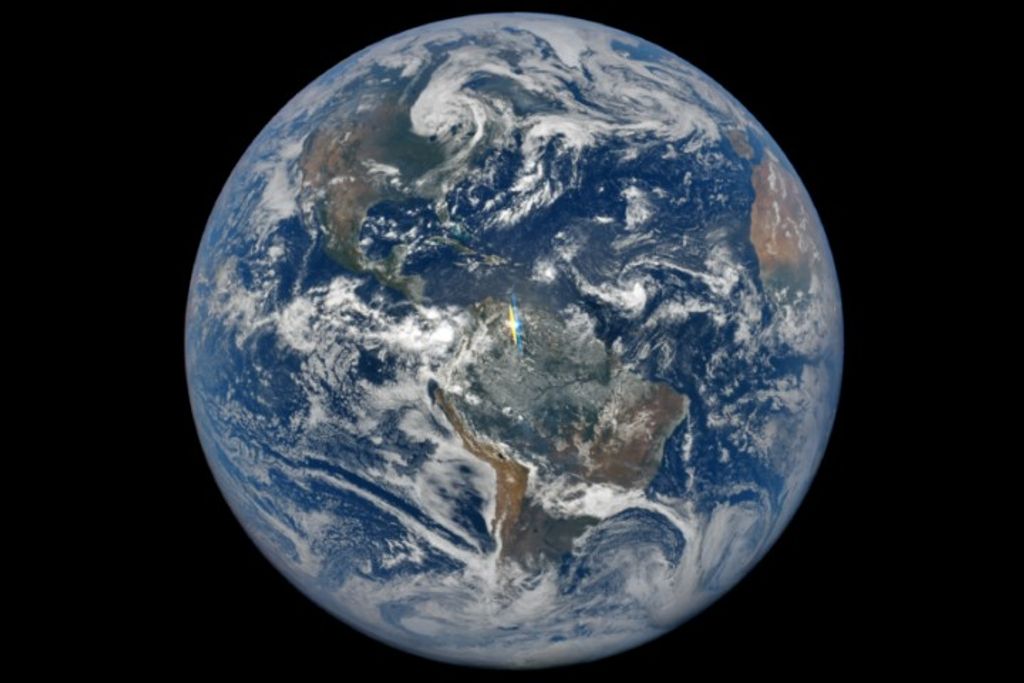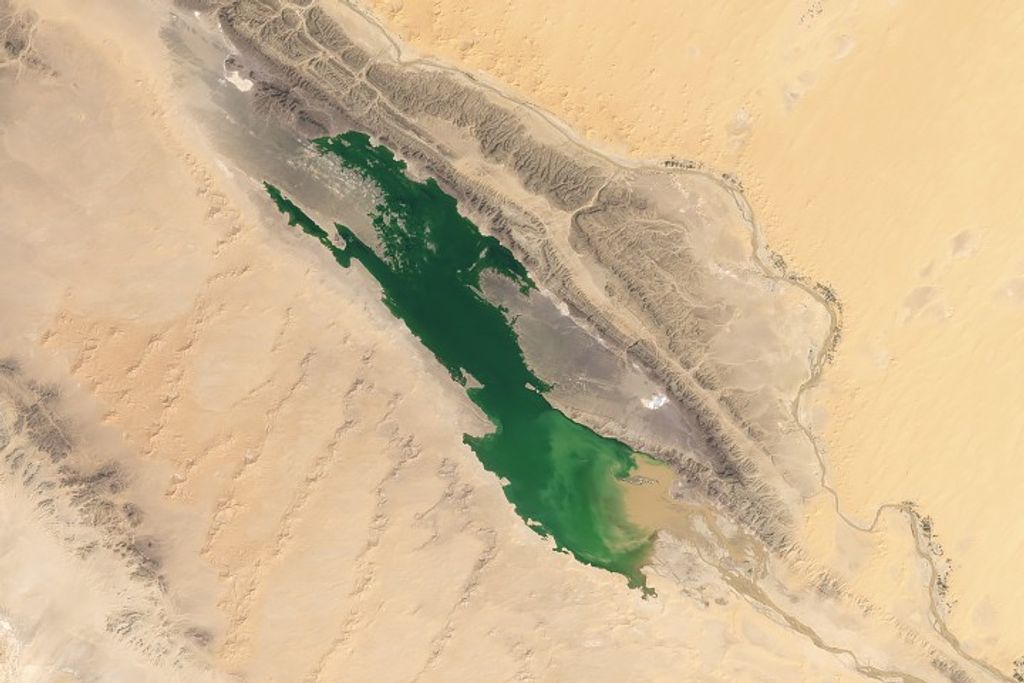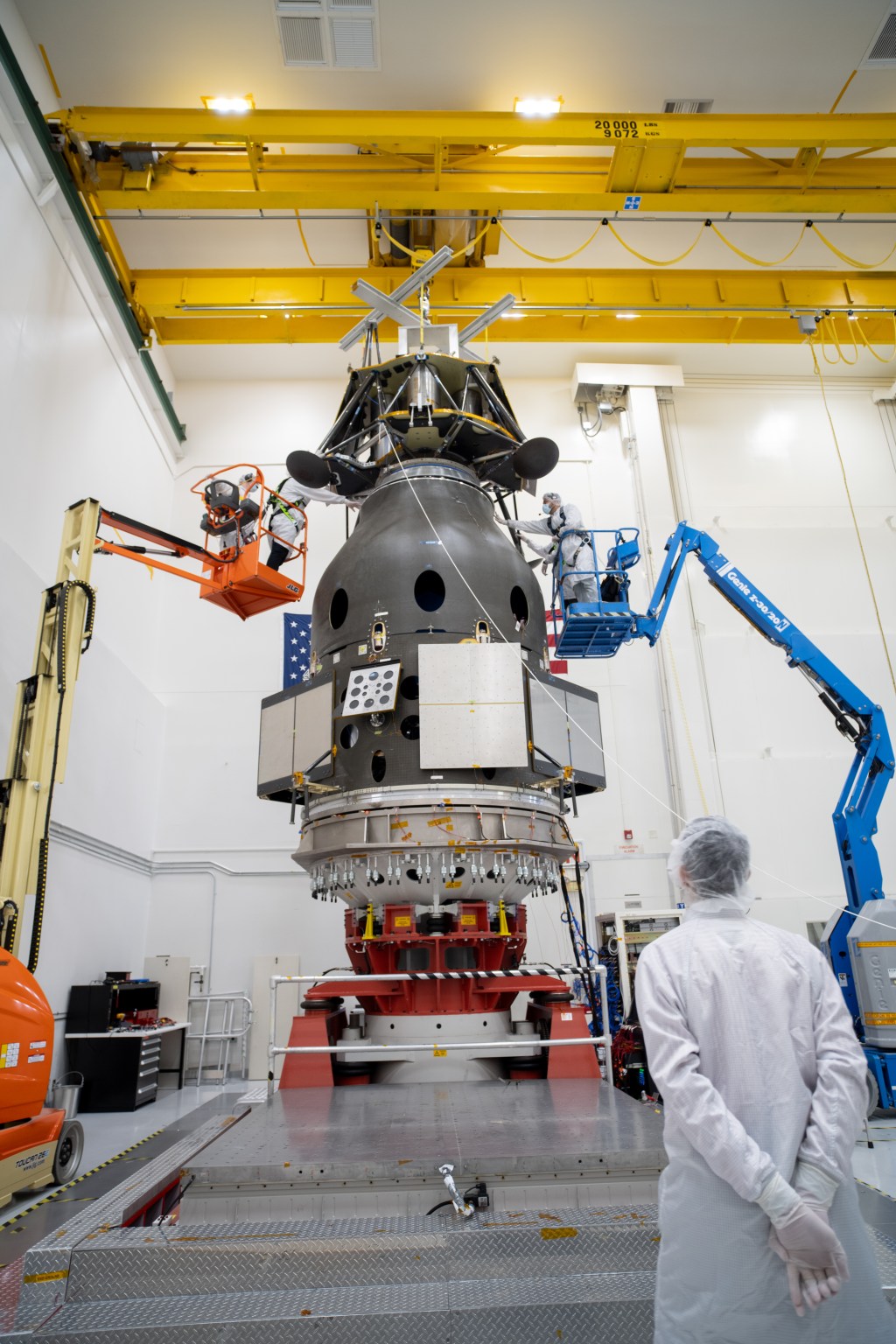1 min read
Changes in the Crab Nebula
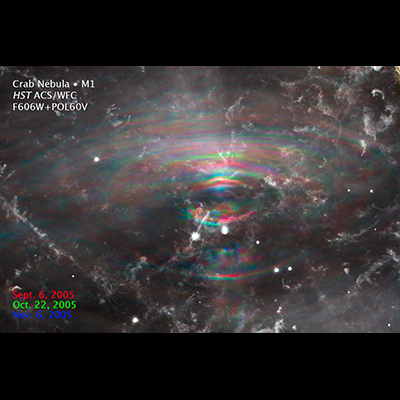
This NASA Hubble Space Telescope image reveals how wave-like structures unleashed by the powerful remnant of a dead star move outward over time in the heart of the Crab Nebula.
The surviving remnant is the collapsed core of a burned-out star, and is called a neutron star. This powerhouse has about the same mass as the sun but is squeezed into an ultra-dense sphere that is only a few miles across and 100 billion times stronger than steel. It is a tremendous dynamo, spinning 30 times a second. This whirling dynamo is visible in the image as the bright object just below center. The object to the left of the neutron star is a foreground or background star.
The image was assembled from three separate exposures taken between September and November 2005 by Hubble's Advanced Camera for Surveys. Each epoch was assigned a different color to show the motion of the wave-like features over time.
About the Object
- R.A. PositionR.A. PositionRight ascension – analogous to longitude – is one component of an object's position.05h 34m 31.94s
- Dec. PositionDec. PositionDeclination – analogous to latitude – is one component of an object's position.+22° 00' 52.2"
- ConstellationConstellationOne of 88 recognized regions of the celestial sphere in which the object appears.Taurus
- DistanceDistanceThe physical distance from Earth to the astronomical object. Distances within our solar system are usually measured in Astronomical Units (AU). Distances between stars are usually measured in light-years. Interstellar distances can also be measured in parsecs.6,500 light-years (2,000 parsecs)
About the Data
- Data DescriptionData DescriptionProposal: A description of the observations, their scientific justification, and the links to the data available in the science archive.
Science Team: The astronomers who planned the observations and analyzed the data. "PI" refers to the Principal Investigator.These datasets are from the HST proposal 12748, P.I.: M. Weisskopf (NASA Marshall Space Flight Center). - InstrumentInstrumentThe science instrument used to produce the data.HST>ACS/WFC
- Exposure DatesExposure DatesThe date(s) that the telescope made its observations and the total exposure time.September 6, 2005 and October 22, 2005
- FiltersFiltersThe camera filters that were used in the science observations.September 6, 2005: F606W (V) and POLV60
- Object NameObject NameA name or catalog number that astronomers use to identify an astronomical object.Crab Nebula, M1, NGC 1952
- Object DescriptionObject DescriptionThe type of astronomical object.Supernova remnant
- Release DateOctober 27, 2016
- Science ReleaseA Death Star’s Ghostly Glow
- Credit

Blue: September 6, 2005 Green: October 22, 2005 Red: September 6, 2005
Related Images & Videos

Crab Nebula (Black/White)
The eerie glow of a dead star, which exploded long ago as a supernova, reveals itself in this NASA Hubble Space Telescope image of the Crab Nebula. But don't be fooled. The ghoulish-looking object still has a pulse. Buried at its center is the star's tell-tale heart, which beats...
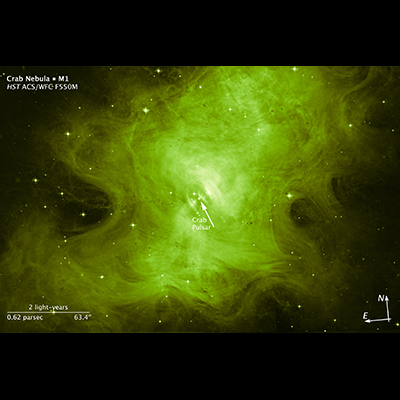
Scale and Compass for Crab Nebula
The eerie glow of a dead star, which exploded long ago as a supernova, reveals itself in this NASA Hubble Space Telescope image of the Crab Nebula. But don't be fooled. The ghoulish-looking object still has a pulse. Buried at its center is the star's tell-tale heart, which beats...
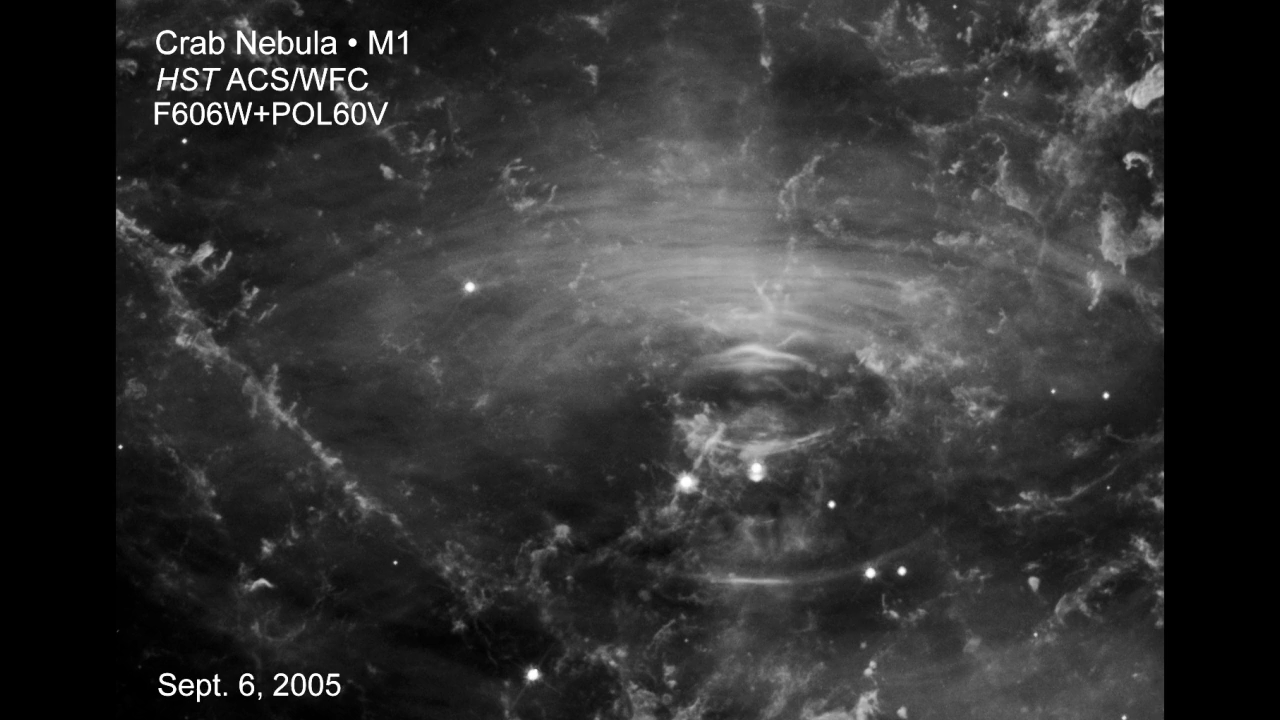
Motion in the Crab Nebula
This time-lapse movie of the Crab Nebula, made from NASA Hubble Space Telescope observations, reveals wave-like structures expanding outward from the "heart" of an exploded star. The waves look like ripples in a pond. The heart is the crushed core of the exploded star, or...
Share
Details
Claire Andreoli
NASA’s Goddard Space Flight Center
Greenbelt, Maryland
claire.andreoli@nasa.gov








